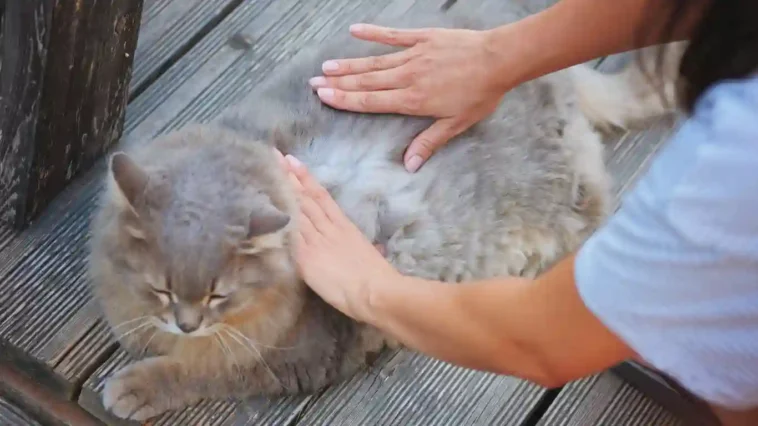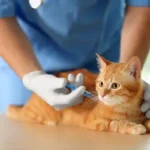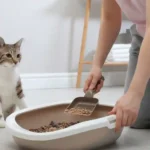Your cat’s lounging on the windowsill, blissfully unaware… until the scratching starts. And then again. And again.
You check, and yep—fleas.
But what if your cat hates water? Like, panics-at-the-sound-of-a-faucet hates it. Bathing them is out of the question, so what can you do?
Don’t worry. You’re not stuck. There are kind, stress-free ways to help your cat fight off fleas—no bathtub involved.
Why Skipping the Bath Is Okay
Some cats just don’t do baths. Maybe they had a bad experience, or it’s just their personality. Whatever the reason, forcing a bath often ends in scratches, stress, and regret—for both of you.
And the truth is? You don’t have to dunk your cat in water to eliminate fleas. Other, gentler options also work (and don’t leave your bathroom looking like a battlefield).
First: Confirm It’s Fleas
Before you jump into treatment, make sure fleas are the issue. Here’s what to look for:
- Constant scratching or biting at their fur
- Tiny black specks (that’s flea dirt—yep, flea poop)
- Scabs or irritated skin
- Live fleas, especially near the neck or base of the tail
- Restlessness or sudden grooming sprees
If you see these signs, chances are your cat’s hosting some unwelcome guests.
Start with a Good Flea Comb
Think of this as your first line of defense. A fine-toothed flea comb helps you catch adult fleas and flea dirt and is completely water-free.
Here’s how to use it:
- Sit in a well-lit area (natural light helps you spot fleas).
- Gently comb through your cat’s fur, especially around the tail’s neck, spine, and base.
- After each pass, dip the comb in a bowl of warm water mixed with a drop of dish soap. This kills the fleas instantly.
It might take a few sessions to dent, but even a little progress is worth it.
💡 Tip: Make it a bonding moment. Talk to your cat, stay calm, and maybe offer a treat after.
Try a Homemade Flea Spray for Cats (That’s Safe!)
Store-bought sprays can be harsh, and some contain ingredients that aren’t cat-friendly. But a homemade cat flea spray can be a gentle alternative—ensure you stick to safe ingredients.
Here’s a simple recipe:
Homemade Apple Cider Vinegar Flea Spray
- 1 part apple cider vinegar
- 1 part water
- Optional: A few drops of cat-safe essential oil (like cedarwood—but skip oils like tea tree or peppermint, which can be toxic to cats)
Mix in a spray bottle, shake gently, and lightly spritz your cat’s fur. Avoid the face and sensitive areas, and don’t drench—just a misting will do.
Some cats won’t love the smell, but most tolerate it better than water. It repels fleas and soothes the skin at the same time.
Always patch test first. A tiny spray on their back to see how they react before full use.
Diatomaceous Earth: The Natural Powder That Packs a Punch
This might sound out of science class, but food-grade diatomaceous earth (DE) is a game-changer.
It’s a fine powder from fossilized algae that kills fleas by drying them out. It sounds intense, but it’s safe for cats—as long as it’s the food-grade kind.
How to use:
- Lightly sprinkle DE on your cat’s bedding, furniture, and carpet.
- Leave it for 24–48 hours, then vacuum thoroughly.
- Some people dust a tiny bit on the cat’s fur—but this should only be done sparingly away from the face.
Don’t worry, it’s odorless and non-toxic. But avoid breathing it in, as it can irritate in large amounts.
Clean Your Cat’s Environment Like a Pro
Even if you treat your cat, fleas can return if their environment stays infested. They live in bedding, carpets, cracks in the floor, and even couch cushions.
Here’s a quick checklist:
- Wash all bedding in hot water (including yours if your cat sleeps with you).
- Vacuum every day—especially under furniture and along baseboards.
- Empty vacuum bags or canisters outside right after use.
- Sprinkle salt or baking soda on carpets before vacuuming. Both help kill fleas and eggs naturally.
And don’t forget soft toys or window perches—fleas love them, too.
Use a Vet-Approved Flea Treatment (Topical or Oral)
If natural methods don’t fully solve the problem, your vet can help. Topical flea treatments (applied to the back of the neck) and oral medications work from the inside out.
The best part? No bath is required.
These treatments kill fleas at different life stages, often within hours. Some are monthly, some longer-lasting.
Talk to your vet about:
- Revolution
- Bravecto
- Advantage II
- Comfortis
Every cat’s different, so let your vet help you choose what’s safest and most effective for yours.
What NOT to Do
Trying anything is tempting when you’re desperate to get rid of fleas, but some things can do more harm than good.
Avoid:
- Essential oils without research. Many are toxic to cats.
- Dog flea products. These can be dangerous for cats, even fatal.
- Over-the-counter sprays that aren’t cat-specific.
- Bathing with human shampoo. It can dry out or irritate your cat’s skin.
When in doubt, always check the label—or ask your vet.
What If You Have Multiple Pets?
Fleas don’t care how many legs your household has. If you have dogs, other cats, or even rabbits, you’ll need to treat everyone—plus the home.
Even if one cat is flea-free, they can quickly get reinfested if their environment isn’t treated or if another pet still carries fleas.
How Long Does It Take to Get Rid of Fleas?
You’ll usually see a significant improvement in a few days with consistent treatment and cleaning. But complete elimination takes time.
Why? Flea eggs can hatch days or even weeks after treatment. That’s why follow-up is key.
Stick with your plan, repeat treatments if needed, and stay patient. You’ll get there.
FAQs
Can I use vinegar directly on my cat to kill fleas?
No. Vinegar can irritate the skin if used undiluted. Always dilute it with water before spraying, and avoid the face.
How often should I use a flea comb?
Daily is best during an active infestation. It helps reduce adult fleas and gives you a clear idea of your progress.
Is it safe to use homemade flea sprays every day?
Yes, if it’s gentle and your cat tolerates it. But don’t overdo it—too much can dry out their fur or annoy them.
How long do fleas live on cats?
Fleas can live up to 2–3 months if untreated. They reproduce fast, so early action is essential.
Should I treat my indoor-only cat for fleas?
Yes. Fleas can hitchhike inside on shoes, clothes, or other pets—even if your cat never steps outside.
Final Thoughts — Be Kind to Yourself (and Your Cat)
Flea problems can feel overwhelming, especially when trying to keep things gentle for your cat. But you’re doing the right thing by looking for a calm, bath-free solution.
Remember: it doesn’t have to be perfect. A few fleas today don’t mean you’re a bad cat parent. What matters is that you’re taking action—with patience and care.
So grab that comb, make a spray, clean the bedding, and show those fleas they picked the wrong cat.
And when your kitty curls up, scratch-free and purring at your side? That’s your thank-you.







GIPHY App Key not set. Please check settings